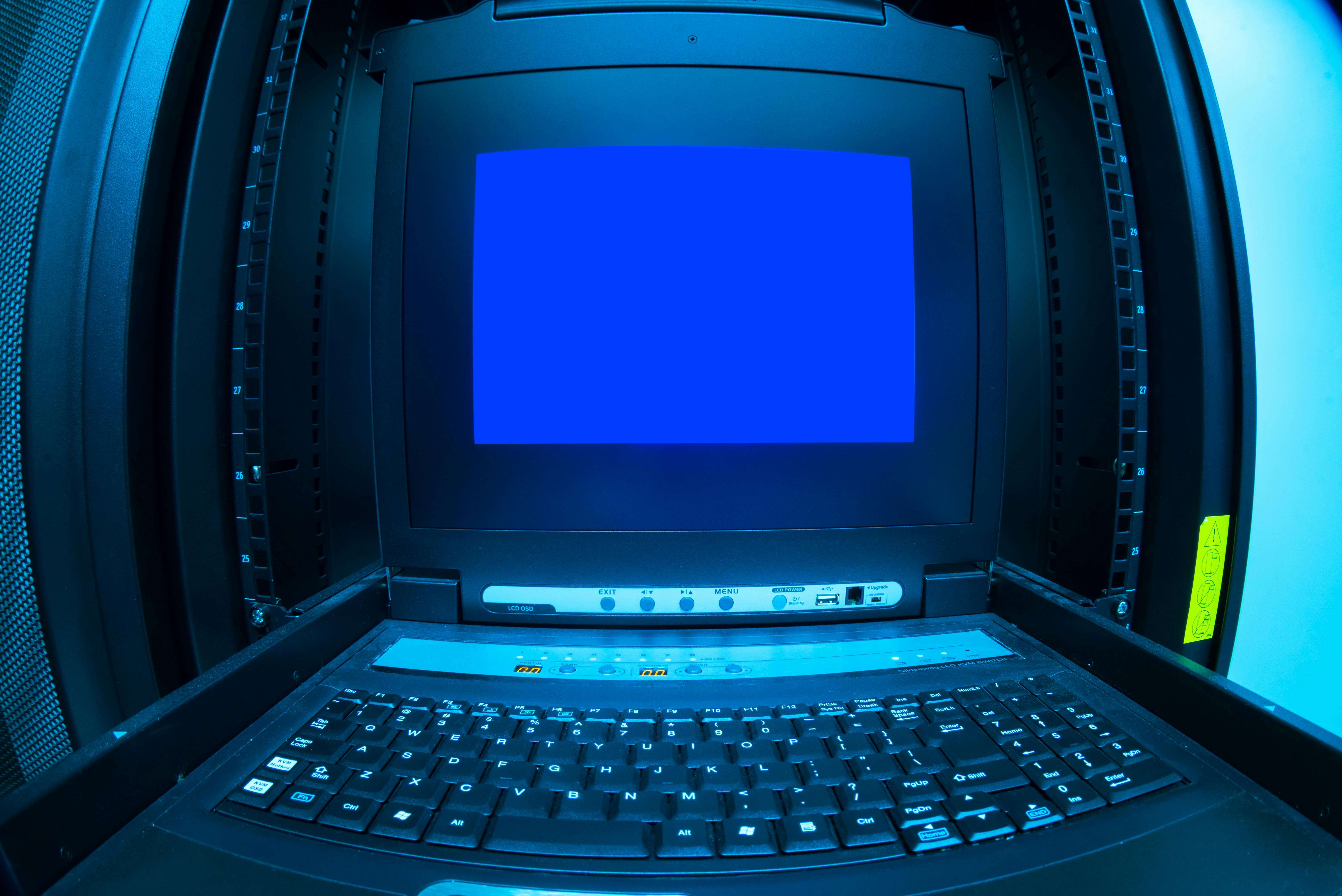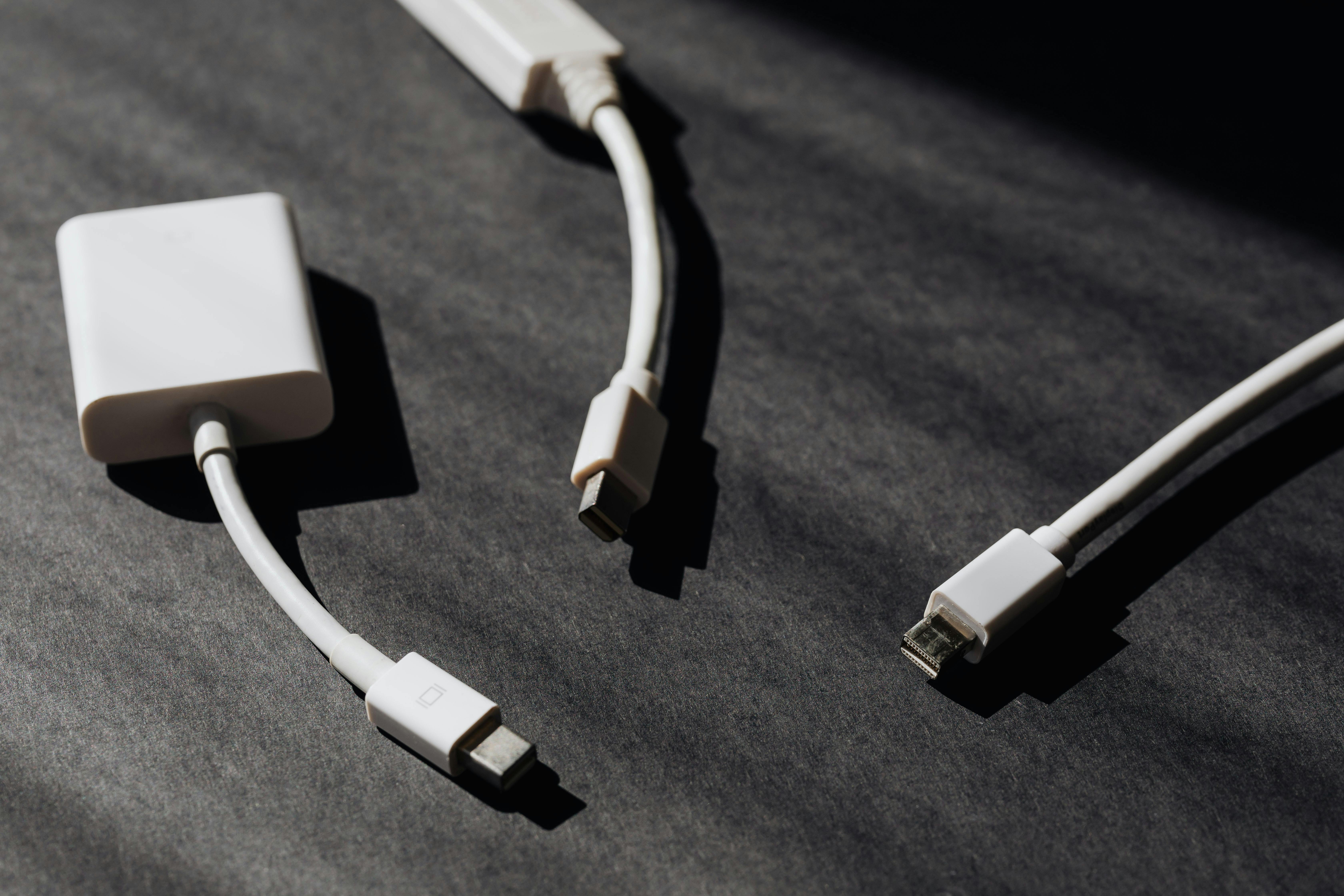Are you struggling with a Windows 11 network adapter disable fix? You’re not alone! Many users are facing the frustrating issue where their network adapters suddenly become disabled, leaving them cut off from the internet. Whether it’s for work, gaming, or staying connected with loved ones, losing internet access can be incredibly inconvenient. In this article, we will explore quick solutions to help you restore your network connection and get back online in no time!
To resolve this pesky problem, we’ll dive into several easy-to-follow methods, ensuring that you can take control of your Windows 11 network settings. From checking your device manager to updating drivers, our guide covers it all. You might be wondering, what if I could fix this issue in just a few clicks? Well, you’re in luck! We’ll reveal the most effective strategies that can save you hours of troubleshooting and get your network adapter up and running again.
Moreover, we will discuss common scenarios that lead to network adapter issues in Windows 11. Knowing these can be a game-changer; it allows you to prevent future problems and enjoy a seamless online experience. So, if you’re ready to uncover the secrets to a Windows 11 network adapter disable fix, stay tuned! Let’s empower you with the knowledge to tackle this issue head-on and keep your digital life uninterrupted. Don’t let connectivity problems hold you back—discover the solutions today!
Top 5 Proven Methods to Fix Windows 11 Network Adapter Disabled Issues Quickly

Windows 11 has been a game-changer for many users, but sometimes issues arise, like the network adapter becoming disabled. This can be super frustrating, especially when you rely on your internet connection for work or leisure. In this article, we’ll explore the top 5 proven methods to fix Windows 11 network adapter disabled issues quickly. Whether you’re a tech novice or a seasoned pro, these solutions are simple, effective, and can be done without needing to call tech support.
Restart Your Computer
It sounds simple, but restarting your computer often fixes many issues. When you restart, your system clears temporary files and resets the hardware components, including the network adapter. To do this, click on the Start menu, select the “Power” button, and choose “Restart.” It may seem trivial, but many users found their network adapters working after a quick reboot.
Use the Device Manager
The Device Manager is a powerful tool for managing your hardware. If your network adapter is disabled, you can enable it through this tool. Here’s how:
- Press Windows + X and select Device Manager from the list.
- Find Network Adapters and expand the category.
- Right-click on your network adapter and select Enable device if it’s disabled.
- If it’s already enabled, try selecting Update driver to ensure you have the latest updates.
Sometimes, Windows doesn’t automatically update drivers, so this method is key in fixing your issue.
Network Troubleshooter
Windows 11 comes with built-in troubleshooting tools that can detect and fix issues automatically. To access the Network Troubleshooter, follow these steps:
- Go to Settings by pressing Windows + I.
- Click on System and then select Troubleshoot.
- Click on Other troubleshooters and find Network Adapter.
- Hit the Run button and follow the prompts.
This tool can identify problems and suggest fixes, which is helpful if you’re unsure where the issue lies.
Check Network Settings
Sometimes, network settings can get messed up. If your adapter is disabled, it could help to reset these settings. Here’s what you can do:
- Open Settings again.
- Navigate to Network & Internet.
- Scroll down and select Advanced network settings.
- Under “More settings,” click on Network reset.
This will remove all network adapters and set everything back to default. After performing this, restart your computer again and see if it works.
Command Prompt
If you’re comfortable with a little more technical approach, using Command Prompt could be the solution. Here’s how you can reset your network settings using Command Prompt:
-
Press Windows + R to open the Run dialog.
-
Type cmd and press Enter.
-
In the Command Prompt, type the following commands one at a time, pressing Enter after each:
netsh winsock resetnetsh int ip resetipconfig /releaseipconfig /renewipconfig /flushdns
These commands reset various network configurations and can often solve stubborn network issues.
If your Windows 11 network adapter is disabled, don’t panic. With these five methods, you can quickly troubleshoot and fix the problem. Whether it’s a simple restart or diving into the Command Prompt, these solutions can save you time and hassle. The next time your network adapter acts up, refer back to this guide.
Step-by-Step Guide: How to Enable Your Windows 11 Network Adapter in Minutes

If you find yourself struggling with your Windows 11 network adapter, you’re not alone. Many users face issues with connectivity that often stems from the network adapter being disabled. Don’t worry, enabling your network adapter is generally a straightforward process. In this step-by-step guide, we’ll go through how to enable your Windows 11 network adapter in minutes. Plus, we’ll share some quick fixes if you encounter problems.
Understanding the Network Adapter
A network adapter is a hardware component that allows your computer to connect to a network, whether it’s wired or wireless. Back in the days of Windows 7 and 8, users were already familiar with network settings, but Windows 11 has brought some changes, making it essential to understand how to navigate these settings effectively.
How to Enable Your Network Adapter
Here’s how you can enable your network adapter in just a few simple steps:
-
Open Settings
- Click on the Start button, then select Settings. You can also use the shortcut
Windows + I.
- Click on the Start button, then select Settings. You can also use the shortcut
-
Go to Network & Internet
- In the Settings menu, find the section labeled Network & Internet. Click on it.
-
Access Advanced Network Settings
- Scroll down and look for Advanced network settings. Click on it to view more options.
-
Network and Sharing Center
- In this section, you should see the option for Network and Sharing Center. Click on it.
-
Change Adapter Settings
- On the left side, click Change adapter settings. This will open up a window showing all network connections.
-
Enable the Adapter
- Right-click on the disabled adapter. If it says Enable, click on it. If it’s already enabled, you may need to troubleshoot further.
Common Issues and Quick Fixes
Sometimes you may find that your network adapter is disabled, and it won’t enable even after following the steps above. Here’s a list of common issues and quick fixes:
-
Driver Issues: If the drivers are outdated, your adapter may not function properly. You can update the driver by right-clicking on the adapter and selecting Update driver.
-
Disable and Re-enable: Sometimes, just toggling the adapter can fix the issue. Right-click the adapter, select Disable, wait a few seconds, then Enable it again.
-
Check Network Services: Ensure that necessary services are running. Press
Windows + R, typeservices.msc, and check that the following services are running:- DHCP Client
- Network Connections
- Network List Service
-
Run the Network Troubleshooter: Windows 11 has a built-in troubleshooter that can identify and fix common network problems. Go to Settings > System > Troubleshoot > Other troubleshooters and run the Network Adapter troubleshooter.
Additional Tips
If you still can’t get your network adapter working, consider these additional tips:
-
Reset Network Settings: This will remove all network adapters and set your network settings back to default. Go to Settings > Network & Internet > Advanced network settings > Network reset.
-
Check for Windows Updates: Sometimes, a pending update can cause issues. Make sure your system is fully updated by going to Settings > Windows Update.
-
Use Command Prompt: Advanced users can use Command Prompt to reset network settings. Open Command Prompt as administrator and type the following commands one by one:
netsh int ip resetnetsh winsock resetipconfig /releaseipconfig /renew
By following these steps and tips, you can easily enable your Windows 11 network adapter and troubleshoot common issues. Don’t let connectivity problems slow you down; with these quick fixes, you’ll be back online in no time!
Why Is My Windows 11 Network Adapter Disabled? Common Causes & Instant Fixes

In today’s digital age, having a stable internet connection is essential. Windows 11 users often face perplexing issues, one of which is why their network adapter gets disabled. If your network adapter is acting up or just seem to disappear, don’t worry. This article dives into common causes and provides instant fixes for the problem.
Common Causes for Disabled Network Adapter
There could be many reasons your Windows 11 network adapter is disabled. Some of the most frequent causes include:
- Driver Issues: The drivers for your network adapter may be outdated or corrupted. This can happen after a Windows update or if you installed new hardware.
- Power Management Settings: Sometimes, Windows automatically disables network adapters to save power. This can be frustrating if you need consistent connectivity.
- Network Configuration Problems: Incorrectly configured network settings can lead to your adapter being disabled.
- Malware or Virus Infections: Malicious software can interfere with your network settings, causing your adapter to disable.
- Hardware Fault: In some cases, there could be a physical problem with the network adapter itself.
Quick Solutions to Fix Windows 11 Network Adapter Issues
If your network adapter is disabled, there are several quick solutions you can try to fix it. Here are some easy steps:
-
Update Drivers:
- Right-click the Start button and select Device Manager.
- Expand the “Network Adapters” section, find your adapter, right-click, and choose “Update Driver.”
- Follow on-screen instructions to complete the update.
-
Check Power Management Settings:
- In Device Manager, right-click your network adapter and select “Properties.”
- Navigate to the “Power Management” tab.
- Uncheck the box that says “Allow the computer to turn off this device to save power.”
-
Network Troubleshooter:
- Go to Settings, then “Network & Internet.”
- Click on “Status” and then “Network Troubleshooter.”
- Follow the prompts to identify and fix problems.
-
Reset Network Settings:
- Open Settings, click on “Network & Internet.”
- Scroll down and select “Network reset.”
- This will remove and reinstall all your network adapters and reset other networking components back to their original settings.
-
Check for Malware:
- Use Windows Defender or another trusted antivirus software to scan your system for malware.
- Remove any threats and then restart your computer.
-
Reinstall Network Adapter:
- In Device Manager, right-click the network adapter and select “Uninstall device.”
- Restart your computer, and Windows will automatically attempt to reinstall the driver.
Comparison of Solutions
| Solution | Time Required | Technical Knowledge Needed |
|---|---|---|
| Update Drivers | 5-10 minutes | Low |
| Check Power Management | 3-5 minutes | Low |
| Network Troubleshooter | 10-15 minutes | Low |
| Reset Network Settings | 5-10 minutes | Medium |
| Check for Malware | 20-30 minutes | Low to Medium |
| Reinstall Network Adapter | 10-15 minutes | Medium |
These solutions can be done quickly and don’t require a lot of technical skills. Each method can be effective depending on the root cause of the issue.
If your Windows 11 network adapter is disabled, it can be annoying and disruptive. By following the steps outlined above, you can troubleshoot and potentially fix the issue in no time. Don’t let a disabled network adapter keep you from enjoying your internet connection. With patience and a little effort, you can get back online!
Unlock Seamless Connectivity: Effective Troubleshooting Tips for Windows 11 Network Adapter Problems

In today’s digital world, seamless connectivity is essential, especially for Windows 11 users who depend on their network adapter for internet access. However, many face frustrating issues with their network adapter. If you’re one of those users, you’re not alone. Let’s explore some effective troubleshooting tips for Windows 11 network adapter problems, and offer quick solutions for those pesky situations where your network adapter gets disable.
Understanding Network Adapter Issues
A network adapter is a hardware component that allows your computer to connect to a network. It could be wired or wireless. Sometimes, these adapters fail to work properly due to outdated drivers, hardware conflicts, or incorrect settings. Users often find themselves scratching their heads, not knowing how to deal with these issues. The good news is that there are several troubleshooting steps you can try before seeking professional help.
Quick Troubleshooting Steps
Here are some effective troubleshooting tips to help you fix Windows 11 network adapter problems:
- Restart Your Computer: It sounds simple, but this often resolves many glitches.
- Check Physical Connections: If you’re on a wired connection, ensure that the Ethernet cable is firmly connected.
- Run the Network Troubleshooter: Windows has a built-in troubleshooter that can automatically find and fix network issues. Access it via Settings > Network & Internet > Status > Network troubleshooter.
- Update Network Adapter Driver: Go to Device Manager, find your network adapter, right-click, and choose “Update Driver.” This can solve compatibility issues.
- Disable and Re-enable the Adapter: Sometimes, toggling the adapter can restore functionality. Right-click on the network adapter in Device Manager, select “Disable device,” wait a moment, and then select “Enable device.”
Windows 11 Network Adapter Disable Fix
Experiencing a disabled network adapter can be particularly frustrating. Here’s a list of solutions to try if you find your adapter unexpectedly disabled:
- Check Power Management Settings: Sometimes, Windows turns off your network adapter to save power. Go to Device Manager, find your network adapter, right-click, and select “Properties.” Under the Power Management tab, uncheck “Allow the computer to turn off this device to save power.”
- Reset Network Settings: If all else fails, you can reset your network settings. Navigate to Settings > Network & Internet > Advanced network settings > Network reset. This will remove all your network adapters and reset networking components to default.
- Use Command Prompt: Open Command Prompt as an administrator and type the following commands one by one:
- netsh int ip reset
- netsh winsock reset
- ipconfig /release
- ipconfig /renew
- ipconfig /flushdns
- Check for Windows Updates: Sometimes, Microsoft releases updates that fix bugs with network connectivity problems. Go to Settings > Windows Update and check for updates.
Common Issues with Network Adapters
Here are some common problems users face with network adapters:
- Slow Internet Speeds: Often caused by outdated drivers or interference.
- Limited or No Connectivity: This could indicate a problem with ISP or configuration.
- Frequent Disconnects: Might be due to interference, old equipment, or driver issues.
Final Thoughts
Network issues can be a major headache, especially when you rely on a stable connection for work or leisure. By following these troubleshooting tips for Windows 11 network adapter problems, you can often find a solution without needing to call in the pros. Remember, keeping your drivers updated and regularly checking your settings can prevent many of these issues from arising in the first place. With these quick fixes at your fingertips, you’ll be better equipped to tackle any network challenges that come your way.
Expert-Recommended Solutions: Restore Your Windows 11 Network Adapter Functionality Today!

Are you struggling with your Windows 11 network adapter? You’re not alone, many users face similar issues that can disrupt their internet connectivity. Expert-recommended solutions are now at your fingertips, and you can restore your Windows 11 network adapter functionality today! Whether your adapter is disabled or just not functioning properly, there are quick solutions to get you back online and enjoying your digital life again.
Understanding the Windows 11 Network Adapter
The network adapter is a crucial component of your computer’s ability to connect to the internet. It allows your device to communicate with networks and access online resources. Over time, updates and changes to your system can sometimes cause problems with this essential hardware. Disabling the network adapter could happen for numerous reasons, such as driver issues or conflicts with other software. Here is a list of common causes:
- Outdated drivers
- Software conflicts
- Incorrect network settings
- Hardware faults
Windows 11 Network Adapter Disable Fix: Discover Quick Solutions!
If you’re facing issues with your network adapter, don’t panic. There are several methods you can use to troubleshoot and fix the problem. Here are some expert-recommended solutions that have worked for many users:
-
Update Network Drivers:
- Go to Device Manager.
- Expand the ‘Network adapters’ section.
- Right-click on your adapter and select ‘Update driver’.
- Follow the prompts to search automatically for updated driver software.
-
Enable the Network Adapter:
- Open Network Connections from the Control Panel.
- Right-click on your network adapter and select ‘Enable’ if it’s disabled.
-
Run the Network Troubleshooter:
- Go to Settings > Update & Security > Troubleshoot.
- Select ‘Internet Connections’ and run the troubleshooter.
-
Reset Network Settings:
- Open Settings and navigate to Network & Internet.
- Scroll down and click on ‘Network reset’.
- Follow the prompts to reset your network settings.
-
Check Hardware Connections:
- Ensure that the network cable is securely connected if you’re using a wired connection.
- For Wi-Fi, make sure your router is functioning correctly.
Additional Tips for Windows 11 Users
Sometimes, fixing the network adapter might require a bit more effort. Here are some additional tips that could help you get your network back up and running:
- Check for Windows Updates: Sometimes, Microsoft releases updates that include fixes for known issues.
- Use Command Prompt: Advanced users can try using commands like
ipconfig /releaseandipconfig /renewto refresh IP settings. - Restore Previous Settings: If the issue began after a recent change, consider using System Restore to revert your system to a previous state.
When to Seek Professional Help
If none of the above solutions work, it might be time to reach out to a professional. Persistent network issues could indicate faulty hardware or deeper software problems. Here are signs that you might need expert assistance:
- Frequent disconnections that can’t be resolved
- Inability to detect any available networks
- Unusual error messages related to the network adapter
In the bustling digital landscape of New York, having a reliable internet connection is essential. By using these expert-recommended solutions, you can restore your Windows 11 network adapter functionality today. Don’t let connectivity issues hold you back; take charge and explore the quick fixes that can bring your network back to life!
Conclusion
In conclusion, addressing the network adapter disable issue in Windows 11 is essential for maintaining a stable and efficient internet connection. Throughout this article, we explored various troubleshooting methods, including checking device drivers, using the Device Manager, and executing network reset commands. Each of these steps serves as a crucial part of the diagnosis and resolution process, ensuring that your network adapter operates smoothly. Additionally, we highlighted the importance of keeping your system updated and regularly monitoring your network settings to prevent future occurrences. If you’re still facing challenges after implementing these solutions, consider reaching out to Microsoft support or consulting community forums for further assistance. Remember, a reliable internet connection enhances your overall computing experience, so don’t hesitate to take action. By following these guidelines, you can restore your network functionality and enjoy seamless connectivity on Windows 11.

